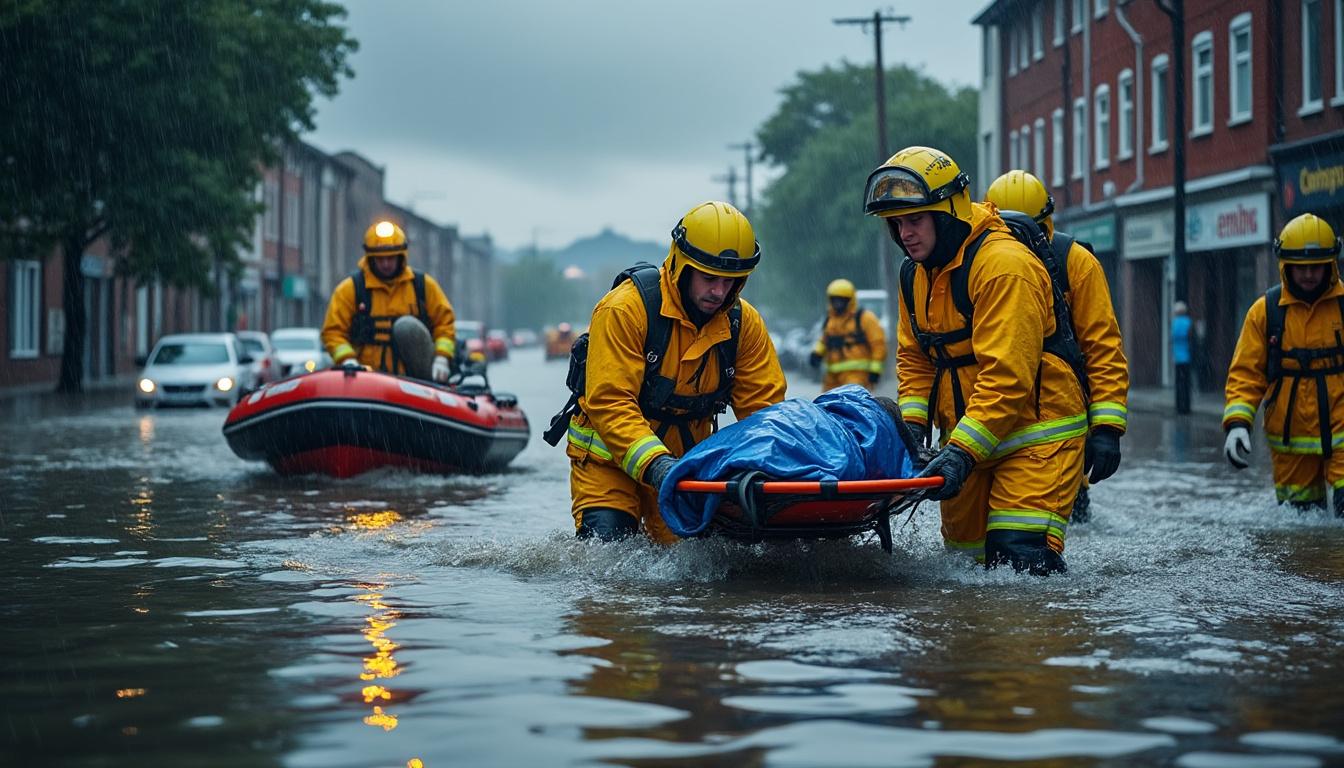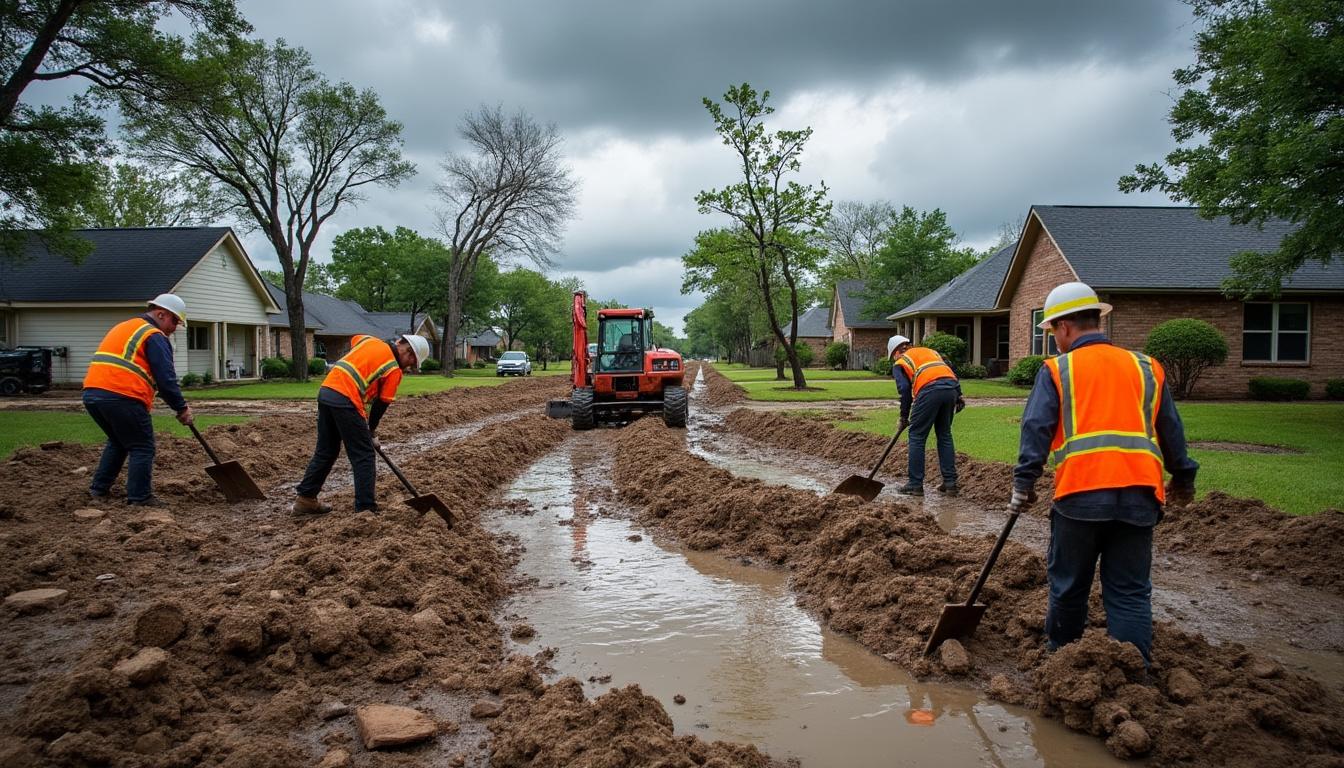The recent flooding along the Guadalupe River has wreaked havoc in the Texas Hill Country, resulting in widespread damage and emotional turmoil for local families. This disaster serves as a grim reminder of the unpredictable and sometimes devastating power of nature. With rainfall reaching unprecedented levels, many residents were caught off guard, leading to emergency evacuations and urgent searches for safety. The impact reaches far beyond the initial rush of water and encompasses the long-term ramifications for families, local communities, and local economies.
Understanding the Catastrophe: Causes and Effects of the Flooding
The flooding along the Guadalupe River was not merely a result of one isolated incident; instead, it was a culmination of several factors that contributed to the disaster. Meteorological conditions played a significant role, as excessive rainfall soaked the area in a remarkably short period. The topography of the Hill Country, marked by steep hills and valleys, amplifies the speed and intensity of river flow during such events, turning it into a torrential force that can transform idyllic landscapes into scenes of devastation.
Local experts have noted that a combination of climate change and unplanned urbanization has increased the risk of flooding in the region. The soil’s saturation point is rapidly approached when rain falls in large volumes within a short timeframe, leading to flash floods. Communities along the river, such as Kerrville and Ingram, have seen the tragic impact of these floods before; however, the damage wrought this time was particularly severe.
Here are some key factors that contributed to the flooding:
- Heavy Rainfall: The Hill Country received unprecedented amounts of rain over a few days, saturating the ground and leading to overflowing rivers.
- Topography: The geographical features of the Hill Country can exacerbate flooding by funneling runoff into rivers.
- Urban Development: Increased development in flood-prone areas has limited natural drainage pathways, allowing water to accumulate faster.
As the floodwaters receded, the aftermath revealed the stark reality faced by local families. Many houses were submerged, businesses were destroyed, and communities were left in shock. The recovery process would not be quick; the emotional toll on families was as impactful as the physical destruction.

Case Study: A Family’s Experience
To understand the human element affected by this catastrophe, it is vital to delve into the experience of a local family. The Martinez family, who owned a vacation rental along the Guadalupe River, faced their worst fears as the water level rose dramatically on that fateful day. They had invested their savings into creating a serene getaway for vacationers, and up until the flooding, they were thriving. However, when the floodwaters hit, everything changed.
With little time to react, the family managed to evacuate, but their property was not so fortunate. By the time the waters receded, their rental property had suffered extensive damage, marking a poignant chapter in their lives. The family was left not only to mourn the loss of their business but also to grapple with feelings of hopelessness as they watched their dreams float away in the waters of the Guadalupe River.
Effective disaster recovery programs were necessary for families like the Martinezes as they sought to restore normalcy in their lives. The community rallied efforts, showcasing the resilience and camaraderie of the local residents. Nonprofit organizations jumped in to provide support, food, and assistance, proving that family support extended beyond bloodlines during such crises.
Emergency Services and Community Response
The rapid response from emergency services during the flooding was critical in preventing further loss of life and property. Firefighters, police, and rescue teams mobilized, working tirelessly to assist families in evacuating. The role these services played cannot be overstated, as their swift actions likely saved lives on several occasions. Communities came together, forming networks of support which emphasized resource-sharing and emotional aid during the crisis.
To examine the efficacy of the emergency response, local teams were deployed in the following key areas:
| Emergency Service | Response Type | Impact |
|---|---|---|
| Fire and Rescue | Evacuation Operations | Numerous lives saved from rising waters |
| Police | Traffic Control & Safety Checks | Ensured safe passage and minimized chaos |
| Local Governments | Resource Allocation | Provided shelters and medical aid |
The need for comprehensive emergency management strategies was clearer than ever. Communities learned from past events to improve their responses, though many were still left to ponder whether enough was done to adequately warn residents prior to the disaster. Lessons learned from earlier flood incidents have given rise to enhanced alert systems, yet questions lingered about whether all warning measures were sufficiently effective in this instance. The challenges posed by extreme weather events have compelled local governments to reconsider their flood relief strategies, underscoring the need for continued investment in infrastructure, forecasting capabilities, and community preparedness.

Nonprofit Organizations Leading the Charge
In the aftermath of the flooding, numerous nonprofit organizations stepped up to fill gaps in flood relief efforts. These organizations worked hand-in-hand with local governments and community leaders, providing financial support, food supplies, and emotional support to families impacted by the natural disaster. The combined efforts of these groups showcased the strength and resilience of the Hill Country community as they navigated their challenges.
The following organizations played critical roles:
- American Red Cross: Delivered food, emergency supplies, and shelter to displaced families.
- Habitat for Humanity: Coordinated rebuilding efforts to help impacted families restore their homes.
- Community Action Agencies: Provided financial assistance to families facing hardship.
Partnerships with local businesses also expanded the reach of these efforts, allowing for donations and volunteer opportunities that amplified the impact on affected families. The story of local communities banding together will stand as a testament to human resilience in the face of disaster, illustrating a powerful narrative of recovery and support.
The Long Road to Recovery: Restoration Efforts
Recovery from a flood like the one experienced along the Guadalupe River is not an overnight endeavor. Restoration efforts require careful planning and collaboration among multiple stakeholders, including local governments, businesses, and families. The challenge lies not just in rebuilding homes and businesses but also in heartening the spirit of a community that has experienced profound loss.
A holistic approach to recovery is essential. It encompasses various aspects, from physical reconstruction to psychological support for those affected. Restoration efforts typically involve the following:
| Aspect of Recovery | Action Required | Impact |
|---|---|---|
| Housing | Rebuilding destroyed homes | Providing shelter and stability for families |
| Infrastructure | Repairing roads and utilities | Restoring access to essential services |
| Mental Health | Providing counseling and support services | Facilitating emotional healing |
The Martinez family and others in similar positions have embarked on this long journey of restoration. Support from family and friends has proven invaluable, as well as resources offered by nonprofit entities aimed at aiding in both physical rebuilding and emotional recuperation. The process is painstaking, requiring patience and community solidarity to rebuild what was lost while fostering a brighter future.

Environmental Impact and Future Preparedness
The floods not only affected the human landscape but also had a significant environmental impact. Ecosystems along the Guadalupe River faced considerable disruption. Forests, flora, and fauna were uprooted or washed away due to the powerful surge of water, impacting the natural balance within the area. Conservationists flagged the necessity of long-term studies to monitor the effects as the region gradually moves towards recovery.
Moving forward, local governments and communities may alleviate future flood risks by reinforcing natural buffers and establishing sustainable practices. Initiatives aimed at reforestation and wetland restoration can offer protection against future events. The following are vital considerations for enhancing the resiliency of the Hill Country against future flooding:
- Implementing Sustainable Development: Encouraging responsible construction that respects natural waterways.
- Investing in Infrastructure: Upgrading drainage systems to handle extreme weather.
- Community Education: Raising awareness about flood preparedness and safety measures.
Such proactive measures require collaboration among policymakers, residents, and environmental advocates, ensuring that the lessons learned from this disaster lead to meaningful change. The narrative does not end with recovery; it extends into a more thoughtful and prepared future.
